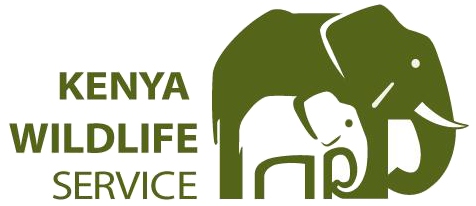 Background
Background

The Kenya Wildlife Service (KWS) is a state corporation that derives its mandate from the Wildlife Conservation and Management Act, 2013, with an overall mandate to protect, conserve, develop and manage wildlife and habitats in Kenya, and to enforce related laws and regulations. In addition, KWS is responsible for the management and protection of critical water catchment areas as well as complementing National security.
KWS manages approximately 8% of the total landmass in Kenya that consists of 23 National Parks, 31 National Reserves and 6 National Sanctuaries, 4 Marine National Parks and 6 Marine National Reserves. There are also 154 field stations and outposts for management of wildlife outside the protected areas.
In 2019, the Service had a total workforce of approximately 6,100 persons, 79% on permanent terms and 21% on temporary appointment. The KWS recognizes that in order to achieve the Strategic Objectives identified in the Annual Performance Contract and in moving toward the Kenya National Wildlife Strategy 2030, it must transform itself into an effective, efficient, independent and accountable Service. Further, it must reorient its working environment as well as its institutional and administrative arrangements towards a culture that is responsive, friendly, and effective both internally to its staff and externally to the public. The general health and welfare of personnel in the KWS is critical for themselves, their colleagues, and service. An unhealthy officer cannot serve their community effectively, and can be a danger to himself, their colleagues and the community they serve. The current study represents the first empirical examination of how the misuse of alcohol and other substances has impacted KWS staffs’ fitness for duty.
 Problem Statement
Problem Statement
KWS personnel fulfil multiple roles ranging along a continuum from administration, wildlife conservation, law enforcement and national security. Harmful substance use, particularly for drugs and alcohol has a negative impact on worker productivity, whether the use occurs off the job or on. Substance use related problems are not characteristic of any social segment, industry, or occupation. Through the current assessment, we wish to gain a sense of potential drivers, pathways, and protective factors associated with drug and alcohol use in the KWS. Importantly, these discussions will be situated in the social and cultural context of drug and alcohol use in Kenya.
 Literature Review
Literature Review
The literature reviewed in this section will focus on the various studies that have been done locally, regionally and globally on alcohol and substance use among wildlife game personnel.
 Contextualizing alcohol and substance use by public sector employees in Kenya
Contextualizing alcohol and substance use by public sector employees in Kenya

Over the last decade the National Authority for the Campaign Against Drug Abuse (NACADA) has reported that harmful drug and alcohol use is one of the most critical challenges facing employers and the workplace in Kenya. Further, many of these challenges have broader community impacts that affect the political, economic, and social stability of the community. Key findings of the NACADA rapid assessment survey of the impact of alcohol and drug use among the public sector employees (2014) indicate that 33.3% of employees in the public sector were currently using
alcohol, 8.5% tobacco, 3.8% miraa, 1.1% bhang and 0.4% narcotics (heroin, cocaine). The findings also showed that current alcohol users (48.5%) had a proportionately higher likelihood of receiving a warning from the employer for an offense compared to current non-users (32.1%). Another 47.8% of employees with a family member abusing alcohol or drugs indicated that their work performance was being affected. Results also showed that 7.2% of current alcohol users drunk on a daily basis, 8.8% had failed to go to work in the last one year due to a hangover and 9.2% took alcohol first thing in the morning to enable them to start working”. Though alcohol and substance use is not specific to any one occupation, the key findings of the baseline survey highlight the importance of the following themes: availability of alcohol and other substances, alcohol policies, drug policies, workplace culture, and workplace alienation (NACADA, 2014).
The prevalence of alcohol consumption and drug use patterns vary somewhat by region of the country. A 2016 survey carried out by NACADA on the status of alcohol and drug use in the coastal regions indicates a lower percentage of residents currently using alcohol (12.6%) compared to the national rate, but higher rate of residents using substances such as tobacco (14.7%), khat/miraa (12.0%), bhang (4.5%), heroin (2.3%), prescription drugs/sleeping pills (1.3%), cocaine (0.9%), and hashish (0.4%) (NACADA, 2016). In addition to commercially produced alcohol, second- generation/home brew/traditional brew represents a substantial proportion of the alcohol consumed in Kenya. Traditional home-brewed spirits or Chang’aa are reported to account for almost 52.8% of alcohol consumed in Murang’a County, Kenya (Gathu, Gakunju, Okwarah, & Thungu, 2013). Previous research has linked second-generation alcohol consumption with sexual risk behaviors, alcohol misuse, violence and economic stress, and HIV infection risk (Kibicho & Campbell, 2019). The geographic scope of KWS Ranger responsibility extends throughout the countr;, it is to be expected that differences in the type and amount of alcohol and substance use by KWS Rangers and their impact may reflect the social environmental stressors of the different conservation areas and the social and physical availability of substances in the locale. A seminal study carried out by the World Wildlife Fund (WWF), “Perceptions of Rangers in Kenya” reported that overall rangers in Kenya feel very positive about their work, their relations with the community and with managers, those rangers in the Southern and Coastal Conservation areas expressed the highest level of physical, cognitive, and social stressors (WWF, 2020). These are factors that have been associated with increased alcohol and substance use.
 Availability: Physical, Social, and Legal
Availability: Physical, Social, and Legal
The literature on availability of substances, both generally and specifically, establishes clear links between ease of access, alcohol consumption rates and alcohol- related problems. In the alcohol research literature, physical and social availability, along with the legality of alcohol generally increase both rates of consumption and consequent alcohol problems. To test the theory, natural experiments in which the availability of alcohol has been reduced have demonstrated attendant reductions in alcohol consumption and alcohol-related harm. Physical availability refers not only to the extent to which alcohol is accessible in a given environment but also to the barriers or costs associated with obtaining it. Social availability refers to the degree of normative support for or against drinking within one’s social environment. Alcohol availability has been found to be equally important in occupational settings (Ames and Grube, 1999). The physical availability of alcohol at work includes procuring alcohol in or around work sites or events, the rules or policies restricting its purchase, possession, and use, and the extent to which these rules or policies can be enforce. The social availability of alcohol at work may relate to the frequency of work- related drinking by one’s friends or immediate co-workers, and the approval or disapproval by one’s work friends, co-workers and supervisor. It is important to note that previous studies suggest that the vast majority of drinking by members of the public sector in Kenya occurs during off-duty time (NACADA, 2014). However, the division between work and leisure for the KWS Game Rangers is not as clear-cut as it is for other professions. According to the “Kenya Ranger Perception Survey”, Rangers reported working “an average of 80-100 hours a week” (WWF, 2020, p. 6). Thus, it is important to consider that all drinking, whether on or off duty is in fact work-related due to the fact that they may be subject to be called to duty at any time.
 Alcohol Use, Substance Use and the related field of public safety / law enforcement
Alcohol Use, Substance Use and the related field of public safety / law enforcement

Major General Johan Jooste (ret.) of the South African National Parks, was recently quoted as speaking about the “militarization of conservation” to describe the shift in rangers’ role from traditional conservation to law enforcement (Tan & Mongabay, 2018). In SANSPark, Jooste estimated that 90% of rangers time is dedicated to criminal law enforcement and 10% to conservation (Hubschle, A., 2017). Driven by an increase in organized crime poaching, in many areas, there is a shift towards paramilitary training and combat-oriented responsibilities for the rangers.
In addition to their conservation responsibilities, KWS rangers have legal authority and responsibility as law enforcement agents. KWS rangers are at the frontline in preventing wildlife crimes like poaching. Thus, it is relevant to consider the occupational literature associated with alcohol and substance use by police. Dating back to some of the earliest research on alcohol use by police (Violanti, Marshall, & Howe, 1983), findings have remained fairly consistent that alcohol use by is correlated with stress and distress related to the structural organization of policing and indirectly related to a process of depersonalization that accompanies the occupation (Chopko, Palmieri, & Adams, 2013; Davey, Obst, & Sheehan, 2001; Lindsay & Shelley, 2009; Patterson, Chung, & Swan, 2014; Richmond et al., 2002; Violanti & Aron, 1994). Depersonalization refers to the psychological distancing of trauma in stressful situations that serves to maintain the officers’ sense of emotional balance. When coupled with social isolation, the status of depersonalization is a strong contributor to maladaptive behaviors.
NACADA rapid assessment survey data (2014) found that workplace alienation and isolation contributes to alcohol and drug use among public sector employees. Rangers face isolation from family and community ostracization because of their work. Wildlife Rangers spend a significant amount of time in physically remote and socially distanced areas, which contributes to the lack of social ties (protective factors) with primary social groups such as the family. According to a WWF Report, 77% of rangers see their family less than 10 days per month, with 30% of the rangers seeing their family members less than 5 days per month (WWF, 2019). Compounding the separation from close family members, wildlife rangers may not be accepted by the local community due to their anti-poaching enforcement efforts. Due to poverty and limited other sources of income, many local poachers and communities start living off this illegal income. This further alienates the ranger from social ties. Though alcohol consumption dominates the literature, there are a few studies that have given us insight into enforcement officers’ use and misuse of illegal drugs (Carter, 1990; Carter & Stephens, 1988; Gorta, 2008; Kraska & Kappeler, 1988). Officers self- reporting illicit drug use tended to be young, inexperienced, and viewed the position of police officer as a job and not a career choice (Wilson, Ashton, and Sharpe, 2001). Stress has been cited as the impetus for using illegal drugs (Gorta, 2008; Stevens, 2005).
Research indicates that marijuana is the most commonly used illegal drug among law enforcement officers with up to 30% of officers admitting to using illicit substances since becoming officers (Carter, 1990; Carter & Stephens, 1988). Officers’ use of prescription pain medications and anti-depressant benzodiazepines are related to the physical availability of these medications. Further, inconsistent workplace policies significantly contributed to officers’ misuse of prescription medications and illegal street drugs (Griffin, 2017).
Research indicates that stress, depression, and psychological illnesses may mask as physical pain (Fontanarosa J, Uhl S, Oyesanmi O, Schoelles KM, 2013; Rijavec, & Grubic, 2012). For example, a recent study carried out in India reported that the predominance of somatic symptoms over psychological symptoms, along with a lack of awareness among patients and doctors, often lead to over prescribing of unnecessary medications (Shetty, Mane, Fulmali, & Uchit, 2018). The COVID-19 pandemic has created additional challenges and stressors on KWS Rangers. According to the International Fund for Animal Welfare (IFAW), all KWS rangers were called back to their duty stations for extended tours of duty, often without any personal protection equipment (PPE). The IFAW and other aid agencies have provided PPE, training, and support for the rangers during this time, but resources are limited and support cannot be sustained at the current level (IFAW, 2020). Examining the impact of stress, mental health, and contributing factors associated with the COVID-19 pandemic on KWS Rangers’ use of alcohol and other substances will be explored in the proposed study.
 Negative Consequences of Stress
Negative Consequences of Stress

Across Africa and around the globe, organizations such as the WWF, The Thin Green Line, Ranger Training Colleges, and volunteer organizations such as Project Embrace in the Kruger National Park South Africa (SANParks) have sprung up to address the psycho-social needs of rangers. While we cannot predict how stress will affect every ranger, a strong evidence base has been developed regarding the negative consequences of stress and the occupation of policing. Given the increased role of KWS Rangers to engage in wildlife crime prevention and law enforcement, this is an area to be explored.
Previous studies have concluded that the law enforcement population suffers from higher than average rates of domestic problems, substance use, and suicide (Anderson, 2008; Atkinson-Tovar, 2003; Copes, 2005; Cross & Ashley, 2004; Violanti, Vena, & Marshall, 1986). In addition, a number of studies have found that police officers have high rates of posttraumatic stress disorder (Green, 2004; Kureczka, 1996; Mann & Neece, 1990; Stephens & Long, 1999). Negative consequences of police stress can be separated into three major areas: psychological and mental disorders, behavioural issues, and physical health concerns. The WWF rangers’ perception survey highlights how relationships with coworkers, relationships with managers and relations with the community may be a source of physical and mental stress (WWF, 2016).
The link between substance use and stress has been well documented in the field of medicine and psychology. The relationship between police stress and substance use has also been documented. While some drinking by police officers may be part of social interactions and not generally harmful, there is extensive evidence to suggest that drinking by police officers in the U.S. is often a maladaptive coping mechanism in response to stress (Carter, 1990; Carter & Stephens, 1988; Shanahan, 1992; Violanti et al., 1999). Cross and Ashley (2004) found that nearly one-quarter of law enforcement officers are dependent on alcohol as the result of on-the-job stress. Another study found that one-third of the sample showed risk of problem alcohol consumption (Davey et al., 2001). A study of Australian police found almost half of the officers surveyed (n=852) reported excessive alcohol consumption (Richmond, Wodak, Kehoe, & Heather, 1998).
NACADA (2020) emphasizes that male-dominated occupations tend to have higher rates of heavy drinking and alcohol-related problems than other occupations. In the KWS, over 85% of the rangers are male. Even more so, the occupational subculture of law enforcement is conducive to a high level of alcohol consumption (Cross & Ashley, 2004; Kohan & O’Connor, 2002; Miller, 2005; Paton & Violanti, 1997; Paton, Violanti, & Schmuckler, 1999; Violanti et al, 1983, 1985). As Cross and Ashley explain, “the unique subculture of the law enforcement profession often makes alcohol use appear as an accepted practice to promote camaraderie and social interaction among officers” (2004, p. 27). Yet, we may not be seeing the same impact on KWS Rangers.
According to those working directly with Wildlife Rangers in South Africa and Kenya, at the present time the ranger subculture in these countries do not necessarily support alcohol use (personal communication with D. McVey, 8/13/2020; J.Jooste, 8/17/2020; E. Smith, 8/21/2020). Considering that those entering the occupation of ranger has changed – a younger and not necessarily bush native, along with the increased responsibilities of criminal law enforcement – the subcultural norms associated with alcohol as a coping mechanism may also be changing.
Poor and hazardous working conditions are an occupational hazard of being a Game Ranger (WWF, 2016). The most recent report proffered by NACADA to assess the status of drug and alcohol use among employees of Kenyan Ministries, Department Agencies, and County Governments (2020) continues to direct attention to the negative impact of limited work supervision, lack of communication and poor equipment increased drug and alcohol use. The literature on police stress clearly indicates that organizational stress is a major concern for officers, often eclipsing concerns about the dangers of the job. Organizational stress stems from internal issues, such as pressure from supervisors, inadequate administrative support, lack of promotional opportunities, arbitrary and inconsistent disciplinary procedures, and perceived favoritism in assignments (Beehr, Johnson, & Nievia, 1995; Copes, 2005; Liberman et al., 2002; McCarty, Zhao, & Garland, 2007; Newman & Rucker-Reed, 2004; Stinchcomb, 2004; Storch & Panzarella, 1996; Violanti & Aron, 1995a). Research has indicated that, with the exception of the duty-related death of a fellow officer, organizational stressors such as lack of consultation and input, inadequate administrative support, and lack of promotional opportunities rank most highly with police research populations (Collins & Gibbs, 2003; Laufersweiler-Dwyer & Dwyer, 2000; Stinchcomb, 2004).
Numerous studies have indicated that organizational factors may actually have a stronger overall impact on officer stress than the inherent dangers of the occupation (Collins & Gibbs, 2003; Graf, 1986; Liberman et al., 2002; Morash & Haarr, 2006; Newman & Rucker-Reed, 2004; Norvell, et al., 1988; Violanti, 2001a, 2001b; Violanti & Aron, 1993, 1995a). Violanti and Aron (1993) found that organizational stressors affected psychological distress more than six times as much as operational police stressors (i.e., critical-incident stress). In fact, research has concluded that organizational stressors predict the risk of posttraumatic stress disorder (PTSD) more than the number or severity of traumatic events experienced (Liberman et al., 2002. One of the most often cited psychological disorders related to police stress is posttraumatic stress disorder (PTSD). Since the acceptance of PTSD into the Diagnostic and Statistical Manual of Mental Disorders (DSM-III) in 1980, research has concluded that this disorder affects not only veterans of war, but also those who have been exposed to other forms of trauma (Paton & Violanti, 1997). PTSD is generally defined as the development of characteristic symptoms following a psychologically traumatic event that is generally outside the range of human experience (American Psychiatric Association, 2000).
PTSD is unique in that great importance is placed on a single traumatic event in determining the origin of the disorder (Friedman, 2003) whereas; KWS Rangers’ stress is often cumulative in nature. Repeated exposure to trauma causes rangers to suppress their emotions, which may result in long-term emotional, psychiatric, and physical illnesses. “The pressure is relentless”, said Elise Serfontein, founding director of ‘Stop Rhino Poaching’, “there is no respite” for the rangers (Tan & Mongaby, 2018). While it may be expected that what we know about how the occupation of being a wildlife ranger will continue to evolved, the limited survey research demonstrates that not all officers experience negative physical, mental, or behavioural outcomes from their profession. Thus it is a matter of interest to identify the individual choices, social and environmental pathways, and/or interventions that serve as buffers against maladaptive behaviours.

